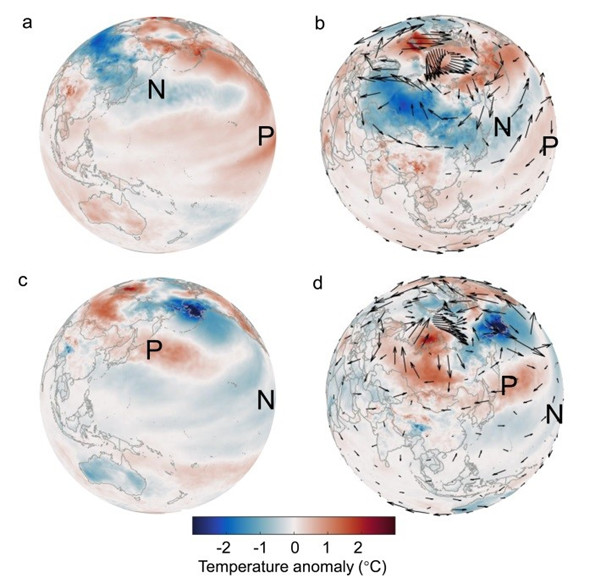| Research |
|
||||
|
||||
|
||||
|
||||
 |
| Location: Home > Research > Research Progress |
| Scientists Reveal the Autumn Cooling Mechanism in Central Eurasia |
| TEXT SIZE: A A A |
Global climate change, represented by rising temperature, rising sea level and frequent occurrence of extreme weather events, has brought severe challenges to human survival and development. Among them, the mid-latitude region of the northern hemisphere is one of the regions with relatively fast warming rate. However, some studies have found that the winter in mid-latitude central Eurasia has cooled since the mid-1990s. This unexpected temperature change and its driving mechanism have attracted wide attention of the international community. However, there is still no unified understanding of the causes of winter cooling in central Eurasia. Some studies suggest that this phenomenon may be related to the melting of Arctic sea ice. Other studies have linked it mainly to fluctuations in atmospheric circulation, such as the Arctic Oscillation. It can be seen that the driving mechanism of winter cooling needs to be further explored.
In response to the above scientific problems, scientists from the State Key Laboratory of Desert and Oasis Ecology of Xinjiang Institute of Ecology and Geography, Chinese Academy of Sciences, conducted an in-depth exploration of the global seasonal temperature change process. It has found that the cooling in autumn in the middle of Eurasia continent has been greater than that in winter since 2004.
To test the reliability of this result, the research team used three different types of data from around the world (reanalysis data, MODIS surface temperature data, and weather station observations) to verify the autumn cooling result in several ways. The mechanism of autumn cooling is explained from the perspective of global atmospheric dynamics. The possible effects of 23 major global atmospheric circulation and Arctic sea ice on autumn cooling in different spatial scales of the Eurasian continent were analyzed. It is found that the driving mechanism of cooling in autumn is obviously different from that in winter.
The autumn cooling in central Eurasia was mainly related to the change of surface temperature in the North Pacific (Pacific Decadal Oscillation (PDO)) and the enhancement of the Siberian high (SH). When PDO is in positive phase, the East Asian trough is enhanced, which leads to low temperature in East Asia. According to the global 500hPa circulation field, when PDO is strengthened, the westerly circulation is southward and further increases, resulting in the cooling of the Eurasian continent (see figure). As a cold, dry anticyclone, the intensification of the Siberian high also provides favorable cooling conditions for the study area. The research was supported by the National Natural Science Foundation of China (U1903208, 41630859) and the Strategic Priority Research Program of Chinese Academy of Sciences (XDA20100303, XDA19030204).
The paper was published on Nature Communications, entitled "Recent fall Eurasian cooling linked to North Pacific sea surface temperatures and a strengthening Siberian high".
Article link: https://www.nature.com/articles/s41467-020-19014-2
Figure 1 Spatial patterns of the wind field anomaly at 500 hPa and temperature anomaly with the PDO positive (negative) phase. The letters "P" and "N" represent positive and negative phase temperatures, respectively.
Contact: LIU Jie, Xinjiang Institute of Ecology and Geography E-mail: liujie@ms.xjb.ac.cn |
